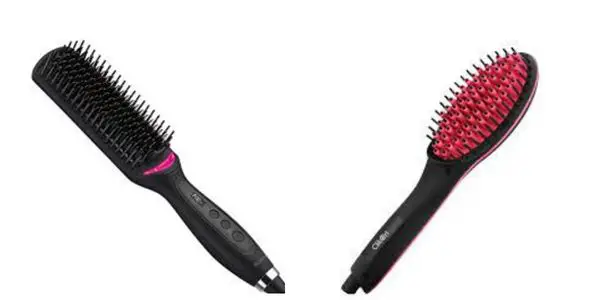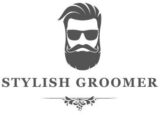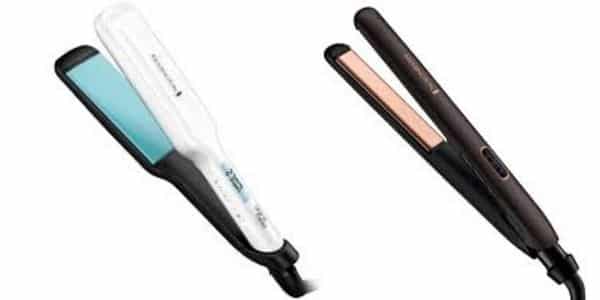Hair straightener brushes have become increasingly popular as a quick and easy way to achieve straight, smooth hair.
However, like any hair styling tool, there are also some disadvantages to using a hair straightener brush.
These can range from potential damage to the hair and scalp to the cost and maintenance of the brush itself.
In this article, we will explore some of the main disadvantages of using a hair straightener brush and consider whether these outweigh the benefits of achieving straight, smooth hair.
What are the Disadvantages of a Hair Straightening Brush

Here are a few disadvantages of using a hair straightening brush.
High Risk of Split Ends & Brakhage
One of the main disadvantages of using a hair straightener brush is the high risk of split ends and breakage.
The heat and pressure applied to the hair while using a hair straightener brush can cause the hair to become dry and brittle, leading to split ends and breakage.
Split ends occur when the hair shaft becomes damaged, and the ends of the hair split into two or more strands.
They can be caused by various factors, including heat styling, chemical treatments, and environmental factors.
Split ends are a common problem for people who straighten their hair frequently and can be difficult to repair.
High Temperature & Heat Damage
Another main disadvantage of using a hair straightener brush is the high temperature and heat damage that can occur during use.
Hair straightener brushes use high heat to straighten the hair, which can damage the hair if it is not used properly.
Heat damage occurs when the heat from the hair straightener brush causes the hair cuticle, or the outer layer of the hair shaft, to become damaged.
This can lead to dry, brittle, and frizzy hair prone to breakage and split ends. Heat damage can also cause the hair to lose its natural shine and elasticity.
To reduce the risk of heat damage when using a hair straightener brush, it is important to use a heat protectant spray or cream before styling.
Versatility
Another disadvantage of using a hair straightener brush is its lack of versatility. Hair straightener brushes are designed specifically for straightening the hair and may not be suitable for creating other hairstyles, such as curls or waves.
In contrast, traditional flat irons and curling irons are more versatile tools that can be used to create a wider range of hairstyles.
Flat irons can straighten, flip, and curl the hair, while curling irons can create tight curls or loose waves.
Hard to Achieve Smooth & Straight Hair
One of the main disadvantages of using a hair straightener brush is that it can be difficult to achieve smooth and straight hair.
Hair straightener brushes use heat and pressure to straighten the hair, but the results may not be as smooth and straight as those achieved with a traditional flat iron.
One reason is that hair straightener brushes do not always apply heat evenly across the hair shaft.
As a result, some areas of the hair may be under or over-heated, leading to uneven straightening and frizziness.
Another reason is that hair straightener brushes may not be as effective at straightening thick or curly hair.
The heat and pressure applied by the brush may not be sufficient to smooth out these hair types, resulting in a less-than-smooth and straight finish.
Uneven Straightening Due to Brush Shape
One disadvantage of using a hair straightener brush is that it can result in uneven straightening due to its brush shape.
Hair straightener brushes are designed with rows of bristles or teeth used to comb through the hair as it is straightened.
However, the shape of these bristles or teeth can make it difficult to evenly apply heat and pressure to the hair.
As a result, some areas of the hair may be under or over-heated, leading to uneven straightening and frizziness.
Time-consuming
One disadvantage of using a hair straightener brush is that it can be time-consuming compared to traditional flat irons or hair straighteners.
This is because a hair straightener brush’s brush shape and bristles can make it more difficult to straighten the hair evenly and quickly.
As a result, it may take longer to straighten the hair using a hair straightener brush compared to a traditional flat iron or hair straightener.
This can be frustrating for people in a hurry or with a lot of hair to straighten.
Clump Danger
One disadvantage of using a hair straightener brush is the risk of clumps forming in the hair.
Hair straightener brushes are designed with rows of bristles or teeth that are used to comb through the hair as it is straightened.
However, these bristles or teeth can sometimes catch on tangles or knots in the hair, leading to clumps of hair being pulled together and straightened simultaneously. This can result in uneven straightening and a less smooth and polished look.
Final Thought
In conclusion, hair straightener brushes have several disadvantages that should be considered before using them to style your hair.
These disadvantages include the high risk of split ends and breakage, the potential for heat damage, the lack of versatility, the difficulty in achieving smooth and straight hair, the uneven straightening due to brush shape, and the longer styling time compared to traditional straighteners.
Additionally, there is a risk of clumps forming in the hair when using a hair straightener brush. While hair straightener brushes may be a convenient option for some people, it is important to weigh the pros and cons and to use them carefully to minimize the risks and achieve the desired results.
Which is better flat iron or a straightening brush?
It can be difficult to determine which is better, flat iron or a straightening brush, as both have unique benefits and drawbacks.
Here are some points:
- Heat: Flat irons generally apply more heat than straightening brushes, so they may be more effective at straightening thicker or curlier hair.
However, this can also make them more damaging to the hair, especially if not used properly.
Straightening brushes typically apply less heat, so they may be less damaging to the hair but may not be as effective at straightening thicker or curlier hair.
- Speed: Flat irons may be faster to use than straightening brushes, especially for people familiar with them.
This can be a big advantage for those in a hurry or who have a lot of hair to straighten.
- Versatility: Flat irons are generally more versatile than straightening brushes, as they can straighten, curl, or flip the hair. Straightening brushes are primarily designed to straighten hair, so they may not be suitable for creating other hairstyles.
- Ease of use: Straightening brushes are typically easier to use than flat irons, as they do not require as much skill or practice to achieve good results.
They can also be less stressful on the wrists and arms, as they do not require as much holding or clamping.
Ultimately, the best choice between a flat iron and a straightening brush will depend on your personal preference, hair type, and styling goals. It may be helpful to try both and see which works better for you.
Does hair straighten brush damage hair?
Hair straightening brushes can potentially damage the hair, although they are generally considered less damaging than traditional flat irons.
This is because hair straightening brushes typically apply less heat to the hair than flat irons.
Heat is one of the main causes of damage to the hair, so using a styling tool that applies less heat can help to minimize damage.
However, it is still possible for hair straightening brushes to cause damage if they are used improperly or on excessively damaged hair.
To reduce the risk of damage when using a hair straightening brush, it is important to use a heat protectant spray or cream before styling and to choose a brush with ceramic or tourmaline plates, as these materials are less damaging to the hair.
It is also important to use the lowest heat setting possible and to avoid using the brush on damp hair.
How often should I use a straightening brush?
It is generally recommended to use a straightening brush no more than once a week in order to minimize the risk of damage to the hair.
Straightening brushes, like other heat styling tools, can cause damage to the hair if used too frequently or improperly.
Heat is one of the main causes of damage to the hair, and using a straightening brush or any other heat styling tool daily or even a few times a week can lead to dry, brittle, and damaged hair.
This can result in split ends, breakage, and a loss of shine and elasticity.
Can a hair straightening brush touch scalp?
It is generally not recommended to touch a hair straightening brush directly to the scalp, as this can potentially cause damage to the scalp and hair follicles.
Instead, keeping a distance of about 3cm between the hair roots and the straightening brush is recommended.
The heat and pressure applied by a hair straightening brush can damage the hair and scalp if used too closely or improperly.
This can lead to dryness, irritation, and even burns on the scalp, as well as damage to the hair follicles, which can lead to thinning or hair loss.
Read Also:
Why won’t my hair stay straight after I straighten it (Solved)
Can I Use Oil Before Hair Straightening (Unbelievable Facts)
Remington Straightener Not Heating Up (Fixed)
Why is my BaByliss straightener not heating up
Dyson Corrale Overheating (How to Fix)


